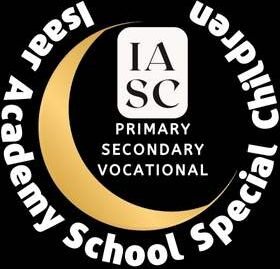People Also Ask
Thus, the Qur’an has been revealed as a mercy for people with special needs, consoling, relieving, and supporting them. It saves them from the most dangerous psychological diseases that may affect them if they happen to suffer fron isolation and withdrawal from social life.
A child has special educational needs if they
have a learning problem or disability that
make it more difficult for them to learn than
most children their age. They may have
problems with schoolwork, communication
or behaviour. Parents can get help and advice
from specialists, teachers and voluntary
organisations.
In Pakistan, some 14.3 million people live with
a disability. Right from birth, these individuals
are often isolated and othered, unable to
claim rights to the same resources as their
able-bodied peers. In a country where
accessibility is rare and acceptance even
rarer, these people find themselves with little
support.
In Pakistan, special education centers are
located in urban areas which are
inaccessible for poor families while rural
areas lack such facilities. Similarly, education
of girls with disabilities are not kept on the
top priority by the head of the house (UNFPA
and Women Enabled International, 2021).
According to the United Nations
Development Programme (UNDP), Pakistan
has one of the highest rates of out-of-
school children in the world, with an
estimated 22.8 million children out of school.
The country also ranks second to last in the
Human Development Index (HDI) in South
Asia, with a literacy rate of just 60%.
Unfortunately for us, the education system of
pakistan is not very good. In fact,since
Independence, Pakistan has been facing
critical problems regarding the education
system and is not paying much attention to it.
If Pakistan wants to progress, than it must
pay attention to its educational system.
In what is now Pakistan, the earliest formal disability rehabilitation centres were a government “blind school” at Lahore, opened in 1906 (Makhdum, 1961, p. 19), and in 1923 the Ida Rieu School for ‘blind, deaf, dumb and other defective children’ at Karachi.
The government’s 2021-23 Pakistan Economic Survey estimates that there were 11.35 million students enrolled in pre-primary education, 25 million in primary education (grades 1-5), approximately 8.75 million in middle education (grades 6-8), 4.5 million in secondary education (grade 9-10), and 2.5 million in higher- .
Chaudhry Muhammad Akhlaq
Special Education Degree Programs In Pakistan
. Bahauddin Zakariya University, Multan:
• Government College University, Faisalabad:
• Government Training College For Teachers Of Blind (Lahore):
• Government Training College For Teachers Of Deaf (Lahore):
• Danish Degree College, Faisalabad:
• The Noble College Of Education:
It is required that special education teachers complete a teacher preparation program as part of their bachelor’s degree program. These programs typically include coursework in pedagogy, as well as a supervised student teaching experience in which you can apply your knowledge and skills in a real classroom setting.
1 in 100 children are diagnosed with autism spectrum disorder as of 2021.
Autism prevalence has increased 178% since 2000. The country with the highest rate of diagnosed autism in the world is Qatar, and the country with the lowest rate is France. Around 4 times as many boys have autism as girls.
In addition to academic challenges, students with learning differences often face social obstacles. The differences in how their brain processes information may mean that their social skills lag behind their peers’, impacting their cognitive processing, language retrieval, executive functioning, and mental health.
The study summarizes that this marginalized section of society is faced with multiple problems, chief among them are education, health and employment. Owing to their disability and attitudinal problems from society, very few of them complete their education, and most of them drop out in the early levels of education.
Lack of Infrastructure and
Facilities
One of the most glaring issues in Pakistan’s education
system is the lack of adequate infrastructure and facilities in many regions. This impedes students’ access to quality education. In rural areas, many schools lack proper buildings, electricity, and clean drinking water.
The history of Special Education is not very old in Pakistan. At the time of independence only three schools were working with children with special needs. The first school was established in 1906 to cater to the educational needs of children with visual impairment.
A special school is a school that caters specifically for children whose needs cannot be met with the Provision and support provided by a mainstream school. This encompasses children and young people with many different types of educational
needs.
There are 14 institutions working for the training and education of mentally challenged children. Special children aging from 5 to 14 years confronted with any sort of mental incapacitation are admitted in these
institutions.
While some people may be able to live relatively normal lives, others may encounter learning challenges and require con- tinued specialist support. According to the Pakistan Autism Society (PAS), in Pakistan, there are more than 350,000 children with ASD.
In Pakistan, majority of educational institutions have no sign language practice for the deaf and no Braille instruction for students with visual impairment (Ali, 2014). This situation is not only miserable for the disabled children but also an alarming situation for the country literacy rates.
According to the recent survey of Pakistan Bureau of Statistics data taken by the National Database and Registration Authority (Government of Pakistan [NADRA], 2020), there are 371,833 children with disabilities in Pakistan across disability areas such as blindness (19,643), deafness and speech impairment (25,183),

